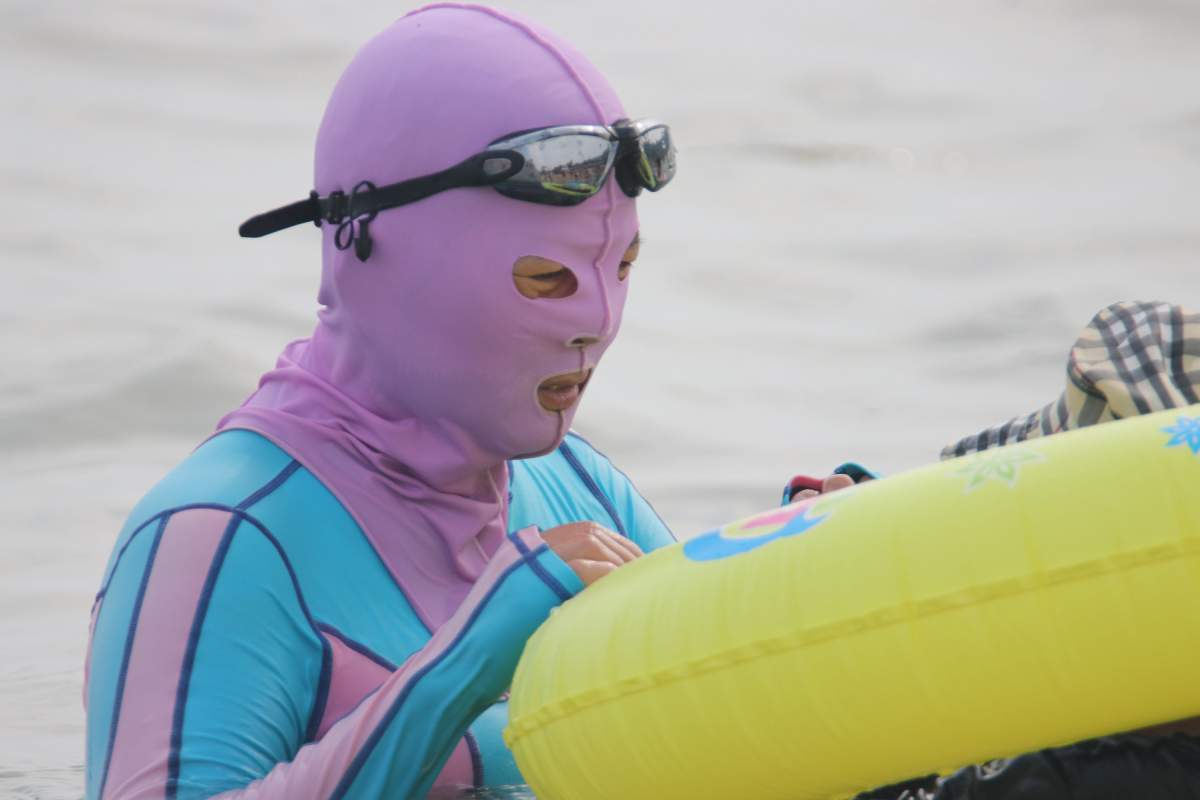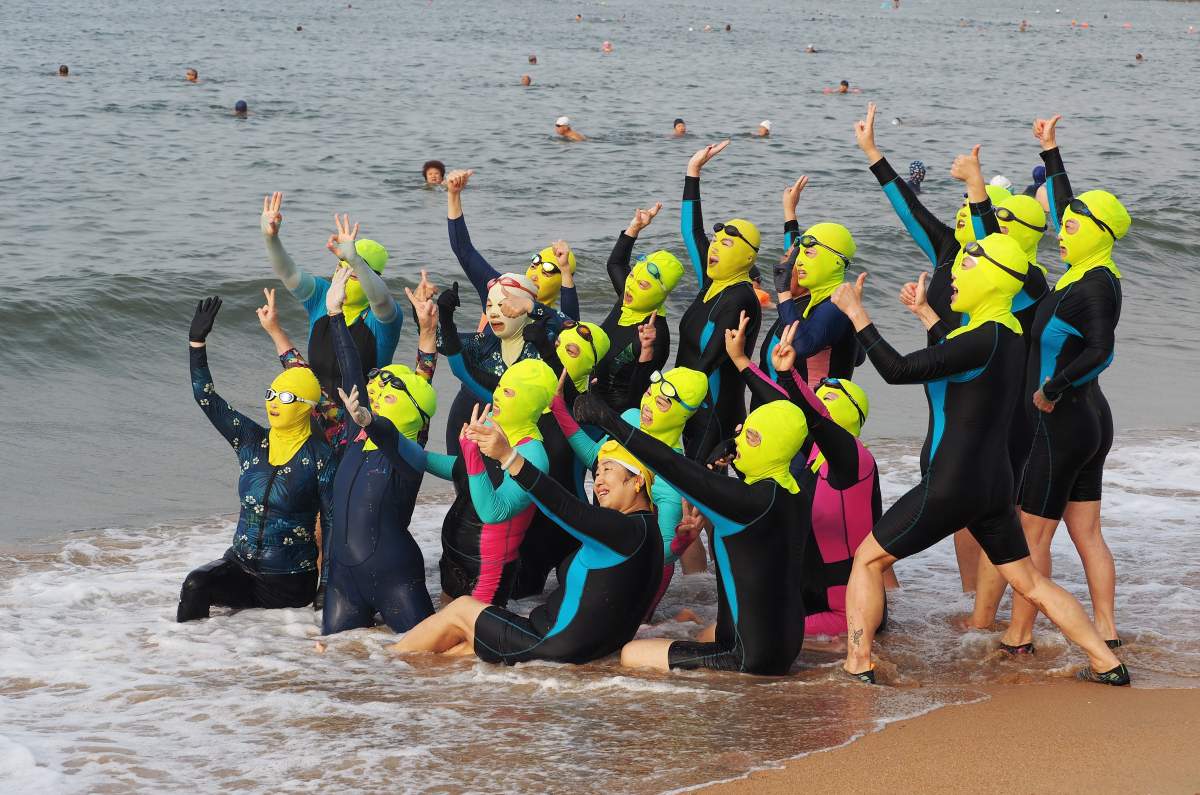China is experiencing record-breaking extreme heat — as is much of the Northern hemisphere — and as temperatures skyrocket, so too are sales of sun protection gear that offers near-complete coverage.

Accessories like the “facekini” are selling out in China as a means to cover up the face to protect against sunburns and skin cancer from ultraviolet (UV) radiation exposure. Facekinis are somewhat like balaclavas, with holes for the eyes and mouth, though they’re typically made of lightweight, synthetic fabrics such as polyester.
They’re typically all one colour but a popular style mimics Chinese-opera-style makeup.
Facekinis are nothing new in China, and have been popular particularly in Qingdao, a northeastern city known for its beaches, for many years now. But analysts say the accessory is becoming much more mainstream.
“This product sells well because it covers the canthus, or the corner of the eye, where freckles may grow easily,” said Dong Wei, a merchant at Yiwu International Trade Market. She told China Central Television that sales of facekinis have been growing 30 per cent year-over-year at her company.

Get breaking National news
Retailers are also reporting a surge in popularity for other sun protection products like arm sleeves and UV-protective hats, some of which look like bonnets that cover the neck and have a long brim to shade the eyes.
“We’re concerned about getting sunburned and tanned so we’re fully prepared,” said a 34-year-old business owner who gave her surname as Hong, referring to her outfit of a hat and arm sleeves as she visited Beijing’s downtown tourism area of Qianmen on Thursday.
Fair skin is a beauty ideal in China and much of Asia. It is considered an indicator of wealth and class because, historically, it was a privilege to be able to stay out of the sun during the day. This ideal has been reinforced through popular culture in cinema, TV and music, and a multi-billion dollar skin-lightening industry that has faced scandal for using toxic ingredients.

And while facekinis and arm sleeves are usually sported by women in China, sun protection gear is growing in popularity with men as well, China Daily reported. On the Chinese e-commerce site JD, sales of sunproof hats for men doubled year-over-year, according to a June report.
Data from Shanghai-based China Insights Consultancy shows that China’s sun protection apparel market will grow at a compound annual growth rate of 9.4 per cent from 2021 to 2026, with the market size reaching 95.8 billion yuan ($17.6 billion) in 2026.
Data from Alibaba Group’s Tmall shopping platform showed that during this year’s 618 shopping festival, held last month, sales of “new generation” sun protection apparel grew 180 per cent year-on-year, with the number of pieces of sun protection gear purchased per consumer two to three times higher than in previous years.
This year, China has seen a record number of days with high temperatures. From 1951 to last year, Beijing had only experienced six days where temperatures hit 40 C, all recorded in separate years. So far in this year alone, the city has had four days of 40-degree heat.
On Sunday, the remote township of Sanboa in China’s arid northwest endured temperatures of more than 52 C on Sunday, setting a national record.
As heat waves continue to bake much of the Northern Hemisphere, from the southern U.S. to the Mediterranean and Northern Africa, it remains to be seen if facekinis will spread in popularity to other parts of the world.
— With files from Reuters









Comments